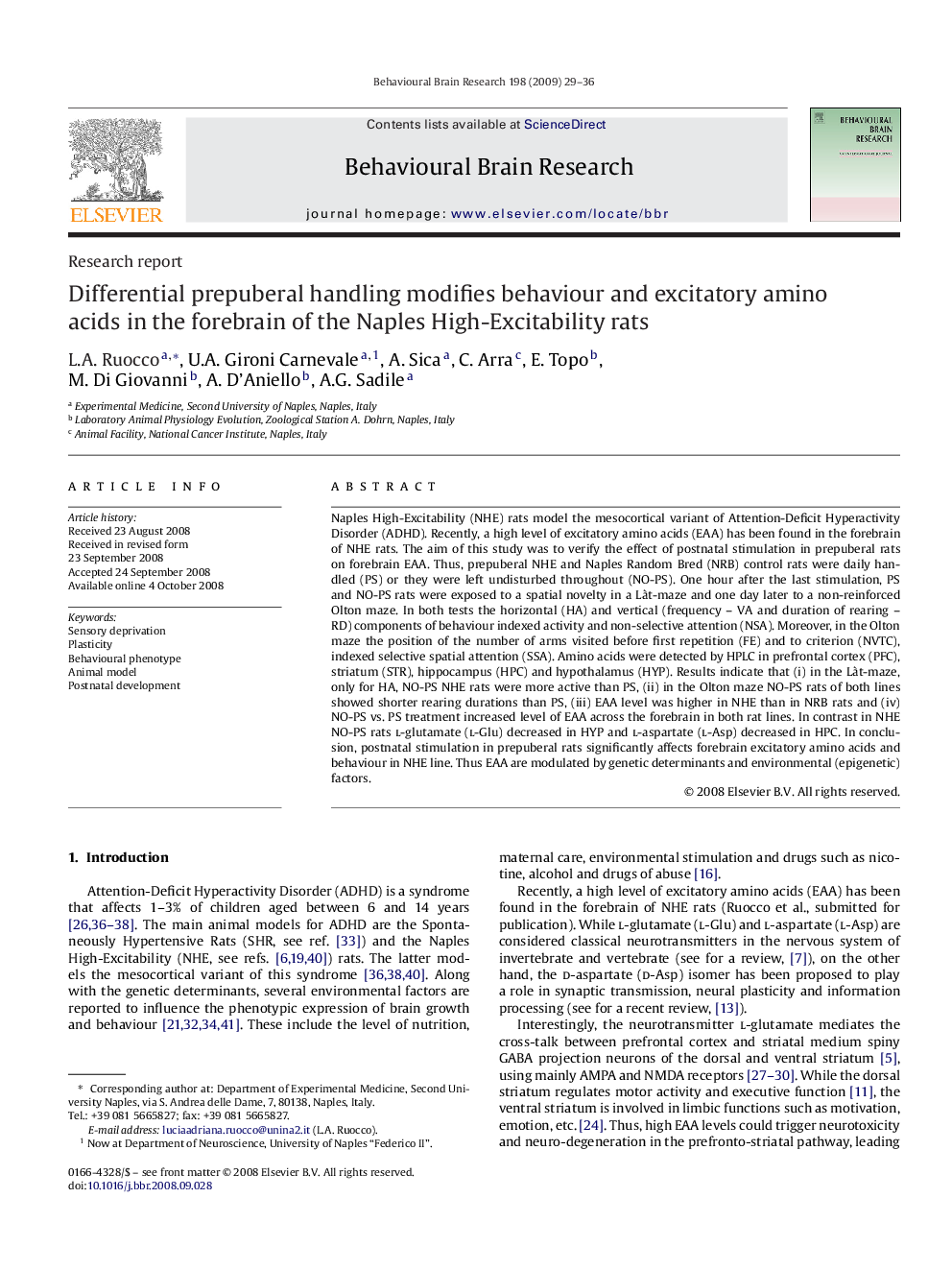| Article ID | Journal | Published Year | Pages | File Type |
|---|---|---|---|---|
| 4314991 | Behavioural Brain Research | 2009 | 8 Pages |
Naples High-Excitability (NHE) rats model the mesocortical variant of Attention-Deficit Hyperactivity Disorder (ADHD). Recently, a high level of excitatory amino acids (EAA) has been found in the forebrain of NHE rats. The aim of this study was to verify the effect of postnatal stimulation in prepuberal rats on forebrain EAA. Thus, prepuberal NHE and Naples Random Bred (NRB) control rats were daily handled (PS) or they were left undisturbed throughout (NO-PS). One hour after the last stimulation, PS and NO-PS rats were exposed to a spatial novelty in a Làt-maze and one day later to a non-reinforced Olton maze. In both tests the horizontal (HA) and vertical (frequency – VA and duration of rearing – RD) components of behaviour indexed activity and non-selective attention (NSA). Moreover, in the Olton maze the position of the number of arms visited before first repetition (FE) and to criterion (NVTC), indexed selective spatial attention (SSA). Amino acids were detected by HPLC in prefrontal cortex (PFC), striatum (STR), hippocampus (HPC) and hypothalamus (HYP). Results indicate that (i) in the Làt-maze, only for HA, NO-PS NHE rats were more active than PS, (ii) in the Olton maze NO-PS rats of both lines showed shorter rearing durations than PS, (iii) EAA level was higher in NHE than in NRB rats and (iv) NO-PS vs. PS treatment increased level of EAA across the forebrain in both rat lines. In contrast in NHE NO-PS rats l-glutamate (l-Glu) decreased in HYP and l-aspartate (l-Asp) decreased in HPC. In conclusion, postnatal stimulation in prepuberal rats significantly affects forebrain excitatory amino acids and behaviour in NHE line. Thus EAA are modulated by genetic determinants and environmental (epigenetic) factors.
